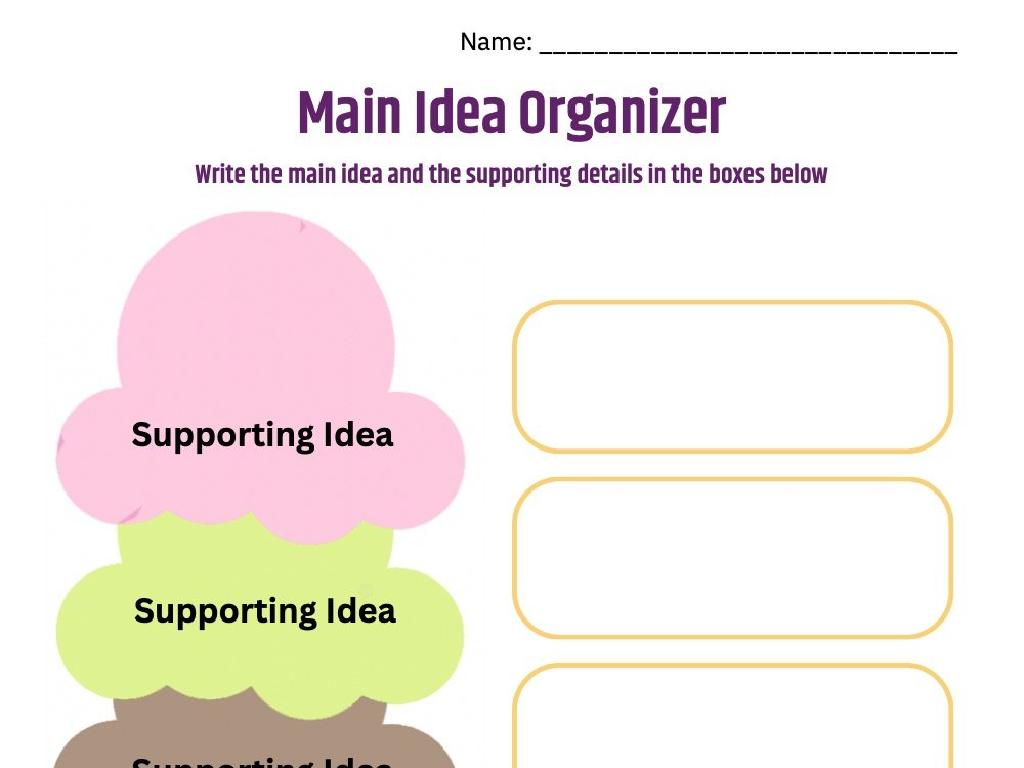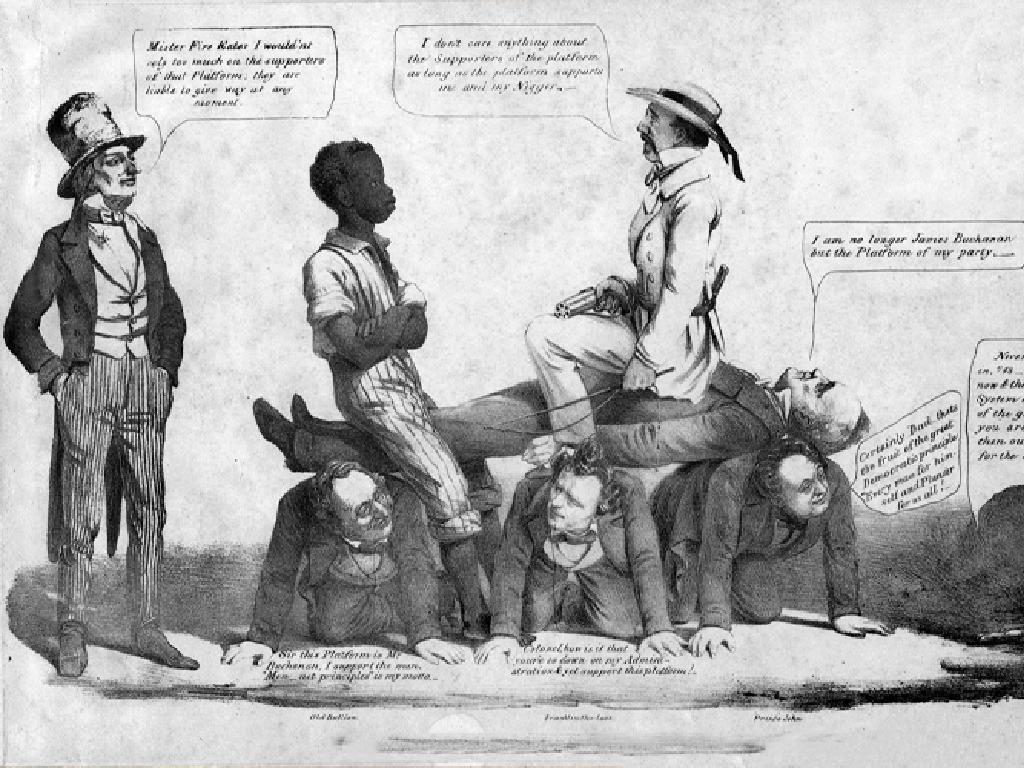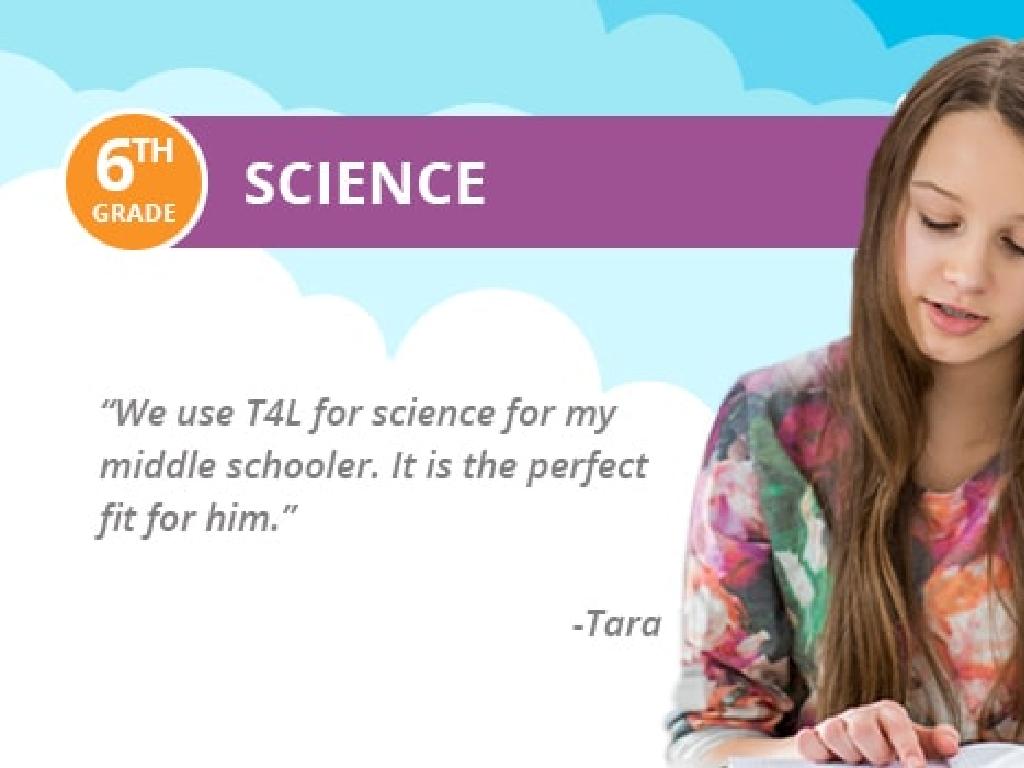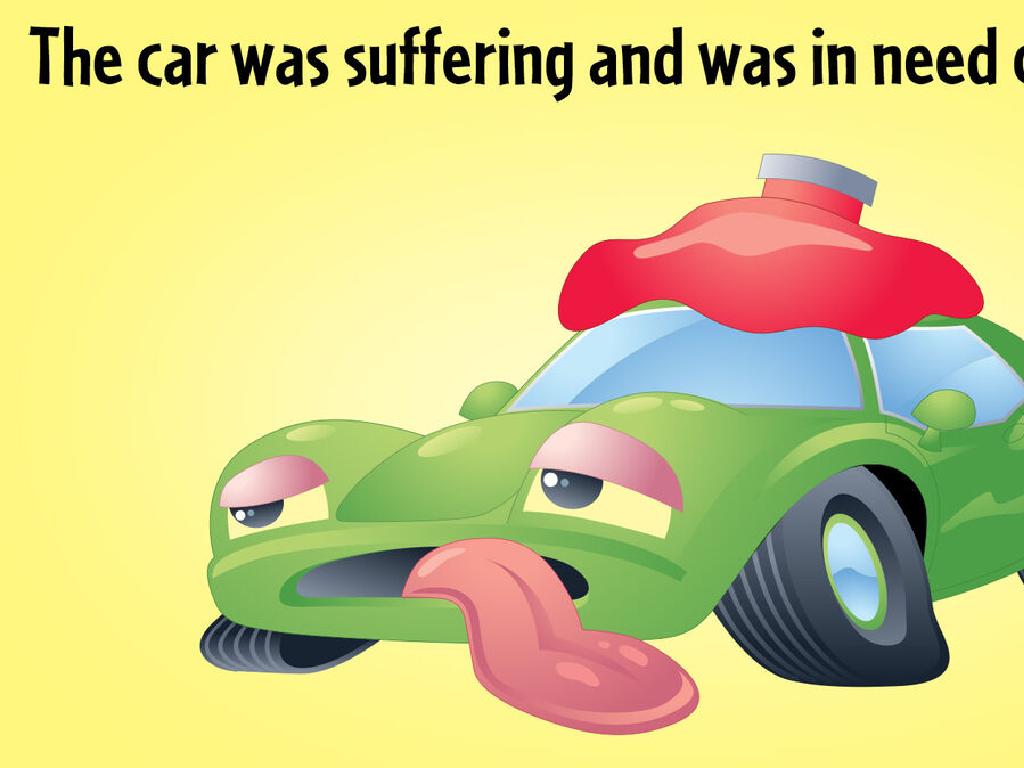Read Realistic Fiction: Set 2
Subject: Language arts
Grade: Third grade
Topic: Literary Texts: Level 2
Please LOG IN to download the presentation. Access is available to registered users only.
View More Content
Exploring Realistic Fiction
– Understanding Fiction
– Fiction is a story from the author’s imagination.
– Characteristics of Realistic Fiction
– Realistic Fiction has believable characters and events.
– Realistic Fiction vs. Other Genres
– It’s like fantasy but with everyday settings and people.
– Discovering Examples of Realistic Fiction
– ‘Because of Winn-Dixie’ and ‘Freckle Juice’ are good reads.
|
This slide introduces students to the concept of realistic fiction, a genre of stories that could happen in real life. Start by explaining fiction as a narrative based on imaginative events and characters. Then, discuss the elements that make fiction realistic: plausible plots, relatable characters, and settings that mirror the real world. Compare realistic fiction to fantasy to highlight differences. Provide examples of popular realistic fiction books suitable for third graders, such as ‘Because of Winn-Dixie’ by Kate DiCamillo or ‘Freckle Juice’ by Judy Blume, to spark interest. Encourage students to think of stories they’ve read that could actually happen and why they believe so. This will help them grasp the concept and prepare them to explore more books in this genre.
Elements of Realistic Fiction
– Characters with real problems
– Think of friends with challenges they face
– Settings found in the real world
– Places you can visit or have seen
– Plots that could really happen
– Stories that feel like they could be true
– Conversations that sound natural
– The way you talk with your friends
|
This slide introduces students to the key elements that make up realistic fiction. Emphasize that the characters in these stories are like people they might know, with problems they can understand and relate to. The settings are places that exist or could exist, making the story more believable. Plots in realistic fiction are events that could happen in real life, which helps readers connect with the story. Lastly, the dialogue in realistic fiction mimics how people actually speak to each other, which can help students better ‘hear’ and ‘feel’ the conversations as they read. Encourage students to think of examples from books they’ve read or from their own experiences that include these elements. This will prepare them for identifying and appreciating realistic fiction in their reading assignments.
Creating Believable Characters
– What defines a believable character?
– Think about how real people behave and feel
– Crafting our own character
– Let’s give our character a name, age, and look
– Detailing our character’s life
– What does our character love to do? Any hobbies?
– Character’s challenges and growth
– What problems does our character face and overcome?
|
This slide is aimed at helping students understand the elements that make a character in a story believable and relatable. Discuss with the students how real people have different aspects to their personality, like hobbies, appearance, and personal challenges, and how these aspects can be translated into a fictional character to make them come to life. Encourage the students to use their imagination to create their own realistic character, considering all these elements. This activity will help them understand character development in the stories they read and also in the stories they may write. It’s a great opportunity to discuss character growth and how overcoming challenges can be a part of a character’s journey.
Exploring Settings in Realistic Fiction
– Understanding story settings
– The ‘where’ and ‘when’ a story occurs
– Discussing familiar settings
– Think of places like school or home
– Effects of setting on stories
– Setting shapes the characters and plot
– Examples of setting influence
– A beach setting may lead to adventure
|
This slide aims to help students understand the importance of setting in realistic fiction. Begin by explaining that the setting is where and when a story takes place, which can include places like a character’s home, school, or a park. Engage the class by discussing settings they are familiar with and how these places make them feel or behave. Illustrate how different settings can affect the mood of the story, the actions of the characters, and the direction of the plot. Use examples from well-known children’s books where the setting plays a crucial role in the story, such as a beach leading to an adventure or a school setting involving learning and friendship. Encourage students to think about how different settings in their favorite books make them feel and to imagine how the story would change if the setting were different.
Plot Twists in Realistic Fiction
– Predicting story events
– Realistic yet surprising twists
– Events that could happen in real life but are surprising
– Crafting a story outline
– Use a basic structure: beginning, middle, end
– Including a plot twist
– Add an unexpected turn in the story
|
This slide aims to introduce students to the concept of plot twists within the context of realistic fiction. Begin by discussing how to predict what might happen next in a story based on clues the author provides. Emphasize that plot twists are events that are both possible in real life and surprising, which make the story more engaging. Guide the students through creating a short story outline, explaining the importance of having a clear beginning, middle, and end. Encourage them to think creatively to include a plot twist that is believable yet unexpected. This exercise will help students understand the structure of stories and enhance their creative writing skills.
Dialogue in Realistic Fiction
– Understanding real conversations
– Think about how you talk with friends
– Writing natural-sounding dialogue
– Use words that sound like the character would really say them
– Practice crafting character conversations
– Create a chat between two characters from a story
– Dialogue enhances story realism
|
This slide introduces students to the concept of dialogue within realistic fiction. Start by discussing how real people communicate and the differences in how we speak to friends, family, and teachers. Emphasize the importance of writing dialogue that reflects how characters would actually speak, considering their age, background, and the situation they’re in. Encourage students to practice by creating their own conversations between characters from a book they’ve read or from their imagination. This exercise will help them understand how dialogue can make a story more engaging and believable. Provide examples of good dialogue and tips for writing conversations that move the plot forward and develop the characters.
Reading Time: Exploring Realistic Fiction
– Read a realistic fiction story
– Focus on listening & understanding
– Identify elements of realistic fiction
– Characters, setting, plot, and real-world events
– Group discussion on story elements
– Share thoughts on the story’s characters and events
|
This slide is designed to engage third-grade students in a group reading activity focused on realistic fiction. Begin by selecting a short story that is relatable and age-appropriate for the students. As you read, encourage active listening and check comprehension with questions. After reading, guide the class in a discussion to identify the key elements of realistic fiction present in the story, such as believable characters, a setting that resembles the real world, a logical plot, and events that could happen in real life. Encourage students to share their thoughts and connections to the story, fostering a deeper understanding of the genre and enhancing their analytical skills.
Class Activity: Write Your Own Realistic Fiction!
– Write a short realistic fiction story
– Use our class-created character and setting
– Include a plot twist and dialogue
– A surprising change in the story, make it exciting!
– Share your story with the class
– Practice reading aloud if you want to share
|
This activity is designed to foster creativity and understanding of realistic fiction. Students will use a character and setting previously developed as a class to ensure a sense of familiarity and collaboration. Encourage them to think about everyday situations that could take an unexpected turn to create their plot twist. Dialogue should reflect how real people talk and help to show the character’s personality. Offer support and guidance on how to structure their stories. For sharing, create a supportive atmosphere where students can volunteer to read their work. Possible activities: 1) Pair students to read each other’s stories and provide feedback. 2) Create a ‘story gallery walk’ where stories are posted around the room for students to read. 3) Have a ‘story swap’ where students exchange stories and guess the plot twist. 4) Organize a ‘writers’ circle’ for students to discuss their writing process. 5) Set up a ‘class book’ where all stories are compiled and can be read by classmates.






